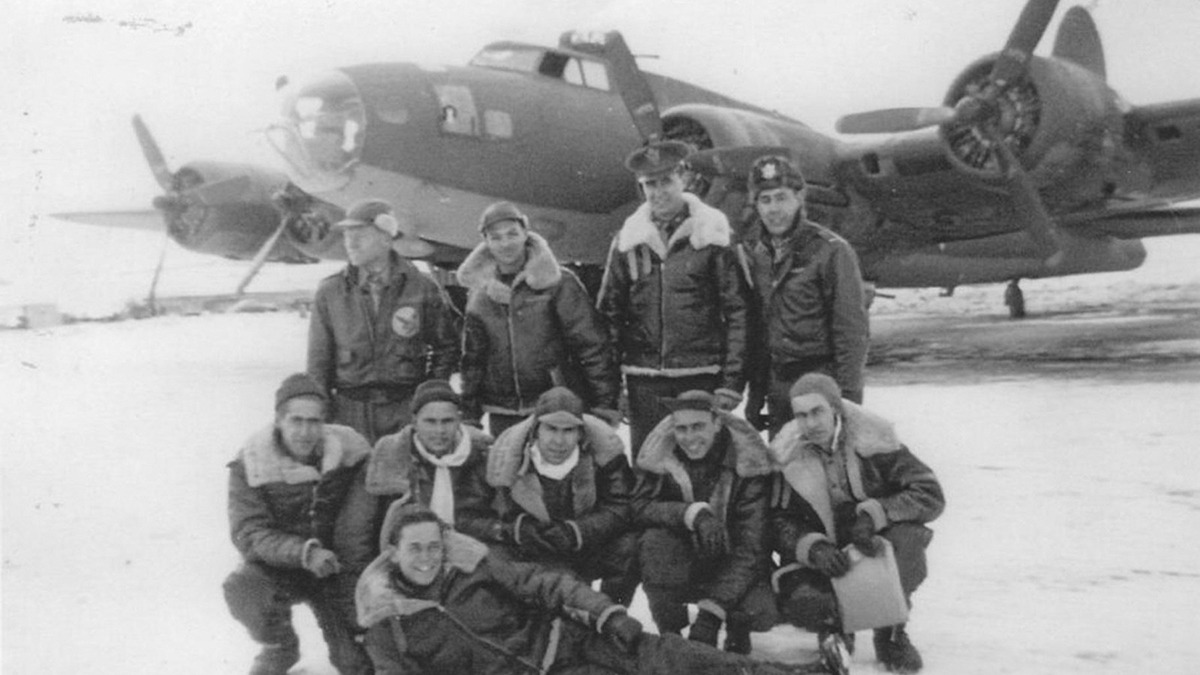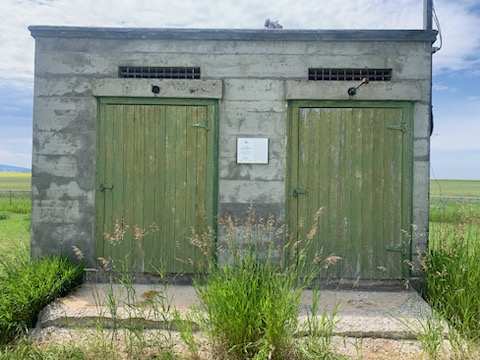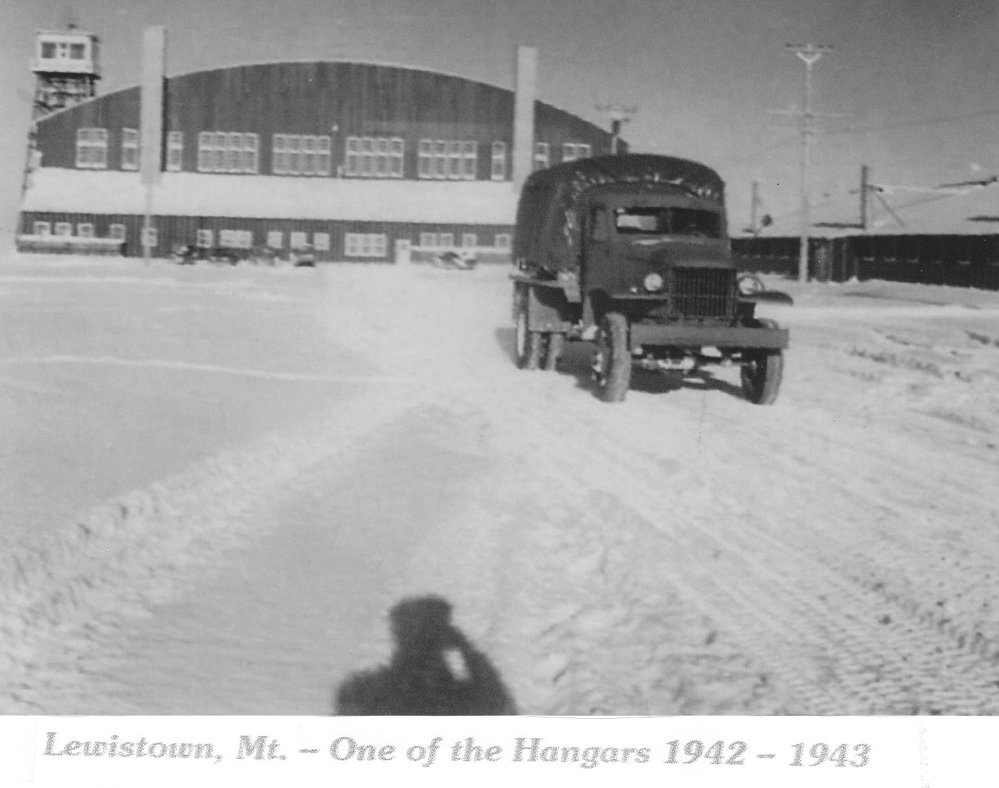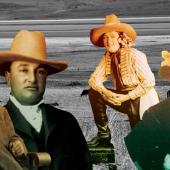Lewistown's Forgotten Air Base

It is 1943 and somewhere over Germany B-17 bombardiers are adjusting their Norden bombsights in preparation for their bombing run. The “Norden” was one of the Army Air Corps’ top secrets, thought to have been so accurate that it could deliver a bomb into a pickle barrel. Though that claim, and the myth and secrecy that surrounded it, still endures, it was a popular fiction at the time, driven by propaganda and wartime patriotism. Bombardiers were required to sign oaths to protect the bombsight with their lives or activate a thermal grenade attached to it so that it would not fall into enemy hands. Truth is, the Norden bombsight was only marginally accurate despite the hype. Even the best bombardier was only able to achieve a sixteen percent accuracy midway through the war.
For the bombsight itself, it was a synchronous, stabilized bomb-aiming device that contained over two thousand separate parts: dizzying arrays of mirrors, telescopes, gyros, gears, levers, and dials. It weighed in at over fifty pounds. Breathing pure oxygen and often in temperatures reaching forty below zero, bombardiers wore silk gloves so that their fingers would not freeze on the delicate aiming dials. At the beginning and end of each mission, armed guards would take the bombsight to a poured concrete and steel, dual-vault storage building that looked, for all the world, like a two-stall outhouse—but built for top security and surrounded by two rows of nine-foot-high barbed wire flanked by a guard booth. Two security airmen stood watch through the night.

There are two parallel stories here. Tucked away in a glass display case in Lewistown’s Central Montana Museum is the once-famous and top-secret Norden Bombsight, one of the last remaining war relics of its kind left in the United States—a true World War Two time capsule.
Then there is the Lewistown Satellite Air Base itself, listed on the National Register of Historic Places. It was an extension of the Great Falls Airbase along with smaller satellite bases in Glasgow and Cut Bank. Their mission was to train bombing crews prior to their deployment to the European theater of war. Lewistown’s satellite base featured an airstrip nearly a mile long to accommodate B-17 bombers. Training “targets” of whitewashed concentric circles made of local stones were scattered throughout central Montana in empty fields. The practice bombs, painted blue, were filled with sand, and equipped with spotting charges which flashed smoke and flame on impact so crews could observe their accuracy.
What remains today in Lewistown is an astonishing collection of World War Two structures in arrested states of decay but perfectly recognizable as relics of that era, down to the original paint, roofing, and window glass. All fourteen of them are snuggled in amongst more modern buildings at the Lewistown Municipal Airport and easily dismissed as just another aging commercial structure flanked by auto body shops, storage buildings, and hangars. Yet each is identified with their National Register plaques explaining their story. Elements of the original base footprint are found today in the blueprints that laid out numbered streets and avenues, still in use amid the municipal airport’s complex.

As for the structures, they were squatty, devoid of any architectural flair, and had the lookalike feel that only an utilitarian military installation could present. They were no beauty queens. The cookie-cutter layout of the buildings replicated similar installations across the nation. Each building had its focused purpose. In the training building, air crews spent eight hours for every hour of flight time learning how to guide the lumbering B-17s into and out of bombing runs. The “camouflage” building, for example, featured a wraparound elevated catwalk that enabled painters to view wing and fuselage panels from above to perfect color and application schemes. But since the Army Air Corps eschewed camo designs on B-17s, the building was modified as a hangar for smaller aircraft used for gunnery practice.
The quartermaster’s building had large door openings on either side to allow for freight trucks to drive through to load and offload food, clothing, spare parts, bedding, machinery, and just about everything else required to supply a one-thousand-man installation. Here, and in other base buildings, vintage calendars and pin-up posters still adorn the walls. A peek inside the recreation building reveals the original wooden floor still echoing in the hollow room with the tunes of Glenn Miller and Tommy Dorsey. The only missing buildings are the thirty-four barracks, infirmary, and mess hall, razed years ago to make room for civilian airport hangars.
Even the humble little fire pump station remains frozen in time as if someone padlocked the door and walked away eighty years ago. Inside, its hulking diesel generator, used for backup power, remains bolted to the concrete floor with the original oil still registering on the dipstick. On the southeast wall is a wooden cabinet, and on the inside of the door are signatures and hometowns of many of the airmen who served at the base. Nearby is the still intact high-capacity electric pump ready to deliver water through underground pipes to the base’s all-wood buildings. The “camouflage” building, where chemicals, paints, thinners, and assorted flammable fluids were stored, was especially vulnerable to structural fire, making the pump station a key component of base security. Not far away is the base’s water tower, still marked with the original, though faded, white and red iconic checkerboard paint scheme, common to the period on military airfields. It was originally built in 1906 in Billings by a firm that specialized in designing steel windmills, then disassembled and freighted to Lewistown.

Then, there is the hulking hangar itself, the mother ship of the whole installation. Despite its enormous size, it went up quickly with contracted crews laying out its bowstring trusses on the ground, disassembling them and then gluing and spiking them overhead when installed. Each training squadron that rotated through the base every three months consisted of nine B-17s. Though cramped, five could be accommodated inside the hangar. And at the far south edge of the complex, silhouetted against a lush Montana wheat field, is the Norden bombsight storage building, thought to be the last of its kind in the United States.
The town, with a 1940 population of 5,874, turned out to welcome the airmen with patriotic fervor. Lewistown’s Civic Center played host to nonstop social events for off-hours trainees yearning for their hometowns. On base, the recreation building for enlisted men was the site of boxing matches and other athletic events with the townspeople, card parties, amateur hours, newsreel and movie nights, and other social gatherings with Lewistown’s citizens. “Young women of certified good moral character, escorted by senior USO chaperones, rode buses to the base on Wednesdays for the dances. Elsewhere known as ‘Victory Belles,’ in Lewistown, these patriotic dance partners dubbed themselves the ‘bomba-dears,’" reads the National Register plaque outside the Recreation Hall.
The Lewistown Airbase went as quickly as it came. The entire base was only operational from November 1942 to October 1944 when it was decommissioned. This followed a pattern of the 1,300 Army Air Corps airfield opening and closing decisions throughout the nation as the War Department closely assessed the needs, costs, and locations of each installation based on how the war was progressing.

Montana’s harsh winter may have had something to do with the Lewistown closure. By coincidence, Lewistown’s line of longitude was only five degrees different than Berlin’s. It was believed that the Montana airspace, terrain, barometric pressure, and winter temperatures would replicate what air crews might expect over Germany. On base, though, the barracks and other assorted operational buildings, erected quickly, lacked adequate insulation. Pipes froze. Windows were only single-paned. Runways were icy. Snow removal was burdensome. Then, too, by 1943, precision daytime bombing raids over Europe were becoming less dangerous when the Air Corps switched from precision bombing to area bombing strategies, leading to a diminished need for Norden-trained aircrews. In the early war years, bomber casualties were ghastly. By the time the Lewistown training base was completed, exhausted German Luftwaffe fighters no longer challenged the Air Corps’ long-range bombing squadrons with their expanded U.S. fighter escorts. Accordingly, the War Department decommissioned the base (and declared it surplus in 1944) and the other smaller training sites in Glasgow and Cut Bank, and the last B-17 lifted off into Montana’s endless skies, en route to Europe’s final fight. In February of 1947, the airfield was officially turned over to the City of Lewistown for use as their municipal airport.
From time to time, Montana ranchers and farmers still find rusted fragments of the practice bombs in their fields, their blue paint faded by eight decades under Montana’s hot sun. Nearly all of the bomb “targets” are gone now, plowed under to create the gridded wheat summer fallow strips that can be seen from satellites. Not even Google Earth can find any. But somewhere out in the flat and remote areas of central Montana, it is believed that there are a few remaining rock bull’s eye “targets” extending outward to one thousand feet in diameter, the last of the bombardiers’ practice sites from so long ago, their white stones bleached and weathered and quieted by the gentle prairie breeze.













Leave a Comment Here